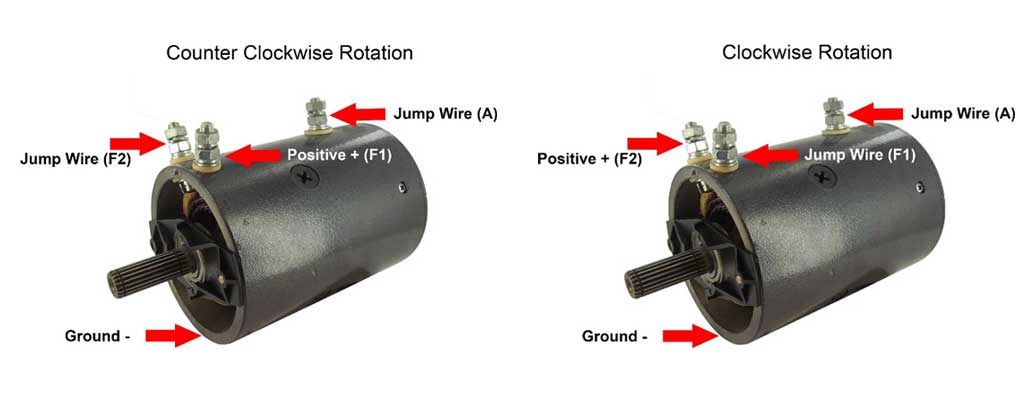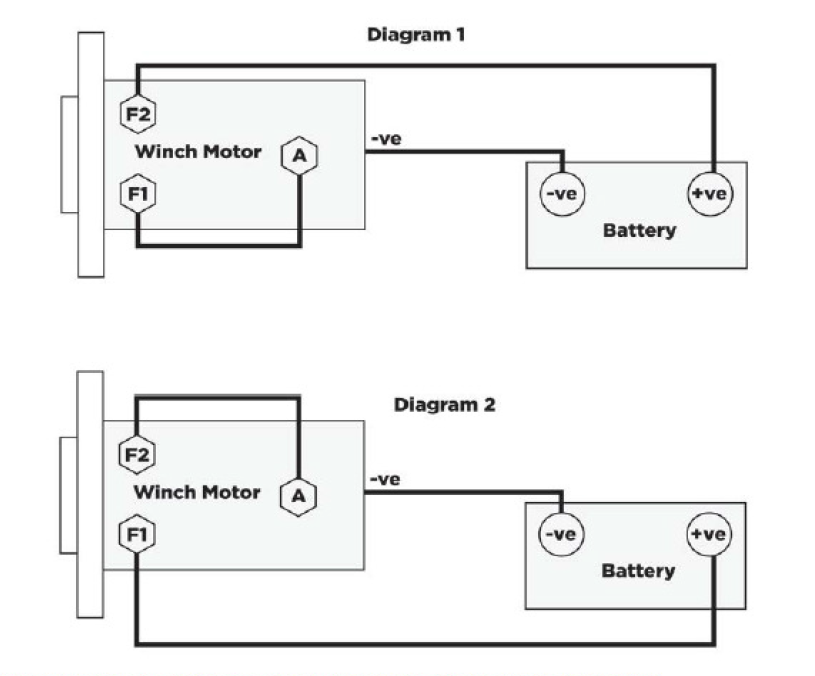How To Test A Winch Motor: Expert Tips for Accurate Results
Testing a winch motor is essential for ensuring its reliability. A well-functioning winch motor can save you in tough situations.
In this guide, we’ll explore the steps to test a winch motor effectively. Whether you’re off-roading or using it for heavy lifting, knowing the condition of your winch motor is crucial. Regular testing can prevent unexpected failures and keep your equipment in top shape.
We’ll cover the tools you need, the process to follow, and some common troubleshooting tips. By the end of this guide, you’ll feel confident in your ability to test and maintain your winch motor. Let’s get started and make sure your winch motor is ready for action!
Safety Precautions
Testing a winch motor can be dangerous if you don’t take the right safety precautions. Proper safety measures help you avoid injuries and ensure the task goes smoothly. Let’s go over the key precautions you need to follow.
Personal Protective Equipment
Always wear the right personal protective equipment (PPE) when testing a winch motor. This includes:
- Gloves to protect your hands from cuts and abrasions.
- Safety glasses to shield your eyes from flying debris.
- Steel-toed boots to protect your feet from heavy objects.
- Hearing protection if the motor is loud.
Wearing the proper PPE can make a big difference in preventing injuries.
Safe Work Environment
Ensure you work in a safe environment while testing the winch motor. Follow these guidelines:
- Keep the area clear of tripping hazards.
- Ensure the work surface is stable and clean.
- Make sure there is adequate lighting to see clearly.
- Have a fire extinguisher nearby in case of an emergency.
Creating a safe workspace helps prevent accidents and allows you to focus on the task.
By following these safety precautions, you can test a winch motor safely and effectively.
Tools And Equipment
Testing a winch motor requires specific tools and equipment. Using the right tools ensures accurate testing and safety. This section covers both essential tools and advanced testing devices you need.
Essential Tools
Before starting, gather these essential tools:
- Multimeter: Measures voltage, current, and resistance.
- Screwdrivers: Various sizes for opening the motor casing.
- Wrenches: Different sizes for loosening and tightening bolts.
- Battery: Provides power for testing the motor.
- Insulated Gloves: Protects hands from electric shocks.
A multimeter is crucial. It helps measure the electrical properties of the winch motor. Screwdrivers and wrenches assist in disassembling the motor casing. A battery provides the necessary power. Insulated gloves ensure your safety from electric shocks.
Advanced Testing Devices
For more detailed testing, consider using these advanced devices:
- Oscilloscope: Visualizes electrical signals and helps diagnose issues.
- Clamp Meter: Measures the current without disconnecting the circuit.
- Thermal Camera: Detects overheating components in the motor.
An oscilloscope helps you see electrical signals clearly. A clamp meter is useful for measuring current without breaking the circuit. A thermal camera detects any overheating parts in the motor.
Using advanced devices helps in identifying hidden issues. They provide detailed insights and ensure thorough testing of the winch motor.
Pre-test Inspection
Before testing a winch motor, it’s crucial to perform a pre-test inspection. This step ensures the motor is in good condition and ready for testing. A thorough inspection can prevent damage and identify issues early. Follow these guidelines for a successful pre-test inspection.
Visual Inspection
Start with a visual inspection of the winch motor. Look for any obvious signs of damage or wear. Check the motor housing for cracks, dents, or rust. Inspect the drum for any signs of deformation or excessive wear.
- Check the motor housing
- Inspect the drum
- Look for rust or corrosion
If you notice any damage, address it before proceeding with the test. This can save time and prevent further issues.
Checking Connections
Next, examine all the connections to ensure they are secure and free of corrosion. Poor connections can lead to power loss or even motor failure.
- Inspect the battery terminals
- Check the wiring for any signs of wear or damage
- Tighten any loose connections
Make sure the wires are properly insulated and not exposed. This helps prevent short circuits and ensures the motor functions correctly.
Performing these pre-test inspections can help ensure your winch motor is ready for testing. It also helps extend the motor’s lifespan.
Electrical Tests
Performing electrical tests on your winch motor is essential. It ensures the motor is in good working condition. These tests help identify issues. They can prevent potential failures during operation.
Voltage Check
Start by checking the voltage. Use a multimeter. Set it to DC voltage. Connect the positive probe to the motor’s positive terminal. Connect the negative probe to the motor’s negative terminal. The reading should match the winch motor’s rated voltage.
If the voltage is lower, your battery may be weak. Or, the connections might be loose. Ensure all connections are tight. Charge or replace the battery if needed.
Resistance Measurement
Next, measure the resistance. This checks the motor’s internal condition. Set the multimeter to the resistance setting (ohms). Disconnect the motor from the power source. Connect the probes to the motor terminals.
The resistance reading should be within the specified range. Consult the motor’s manual for the exact range. If the resistance is too high, the motor may have internal damage. Low resistance might indicate a short circuit.
Inspect the motor for any visible damage. Check the wiring and connections. Replace any damaged parts to ensure optimal performance.
Mechanical Tests
Ensuring your winch motor operates smoothly is crucial for safe and efficient use. Performing mechanical tests helps identify potential issues early. Two key tests include Load Testing and Operational Tests. Each test examines different aspects of the winch motor’s performance.
Load Testing
Load testing measures the winch motor’s ability to handle weight. This test checks if the motor can pull or lift its rated capacity without issues. Follow these steps:
- Secure the winch to a solid, stationary object.
- Attach a load equal to the motor’s maximum rated capacity.
- Operate the winch to lift or pull the load.
- Observe the motor’s performance and listen for unusual noises.
Important Note: Ensure safety while performing load tests. Always stay clear of the load path and wear appropriate safety gear.
Operational Tests
Operational tests assess the winch motor’s general functionality. These tests ensure the motor runs smoothly under normal conditions. Key steps include:
- Inspect the winch motor for visible damage.
- Check all connections and wiring for wear or corrosion.
- Operate the winch without a load to ensure smooth operation.
- Test the motor’s response to controls, including starting, stopping, and speed adjustment.
Performing these simple tests can help maintain your winch motor in top condition. Regular mechanical tests extend the motor’s lifespan and ensure reliable performance.

Credit: www.youtube.com
Interpreting Results
After testing your winch motor, the next step is interpreting the results. Understanding what the readings mean is crucial. This will help you determine if your winch motor is functioning properly or if there are issues that need addressing. Below, we break down how to interpret your test results under different headings.
Normal Readings
Normal readings indicate that your winch motor is functioning well. Here are the key readings to look for:
- Voltage: The voltage should be within the manufacturer’s specified range. Check your manual for the exact numbers.
- Amperage: The amperage should be steady and not fluctuate wildly. This shows a stable current flow.
- Resistance: Low resistance readings are typical for a healthy motor. High resistance may suggest issues.
Identifying Issues
Identifying issues is crucial if your readings do not match normal ranges. Here’s what to look for:
- High Voltage: This can indicate an overpowered motor. It may lead to overheating and damage.
- Low Voltage: Low voltage can mean poor connections or a weak battery. Check your connections and battery health.
- Fluctuating Amperage: If the amperage is not steady, it could indicate a short circuit or damaged wiring.
- High Resistance: High resistance often points to dirty contacts or worn-out brushes. Clean or replace the brushes if needed.
Interpreting these results accurately ensures your winch motor operates safely and efficiently. Regular checks and maintenance will extend its life and reliability.
Troubleshooting Tips
Dealing with a faulty winch motor can be frustrating. But identifying the problem is the first step towards fixing it. Here are some troubleshooting tips to help you test your winch motor effectively.
Common Problems
Several issues can affect a winch motor. The most frequent one is a lack of power. This can occur due to a dead battery or poor electrical connections. Another common problem is the motor overheating. This often happens if the motor runs too long without a break. Lastly, unusual noises from the motor can signal internal damage. Always listen for grinding or squeaking sounds.
Repair Suggestions
Fixing these issues doesn’t always require a professional. Start with the basics. Check the battery and connections. Ensure they are clean and secure. Replace any damaged wires. If the motor overheats, let it cool down. Then, check for any obstructions or dirt. Clean the motor to improve airflow. For unusual noises, open the motor casing. Look for worn-out parts and replace them. If you can’t find the problem, consult the manual or seek expert help.

Credit: www.discountstarterandalternator.com

Credit: forum.ih8mud.com
Frequently Asked Questions
How To Check If A Winch Motor Is Working?
To check if a winch motor is working, connect it to a power source. Observe if the motor runs smoothly without any strange noises or interruptions.
What Tools Are Needed To Test A Winch Motor?
You will need a multimeter, a power source, and basic hand tools. These tools help in checking electrical connections and motor functionality.
Can I Test A Winch Motor Without Removing It?
Yes, you can test a winch motor without removing it. Ensure all connections are secure and use a multimeter to check the electrical flow.
What Are Common Signs Of A Faulty Winch Motor?
Common signs include unusual noises, irregular movement, overheating, and a motor that doesn’t run at all. These indicate potential issues with the motor.
Conclusion
Testing a winch motor is crucial for safety and efficiency. Follow these steps to ensure your winch works correctly. Regular checks help avoid unexpected failures. Keep your tools ready and be patient. Safety gear is essential during tests. With practice, the process becomes easier.
Make sure to consult your winch manual for specifics. Proper maintenance extends the motor’s life. This guide helps you keep your winch in top shape. Happy winching!







